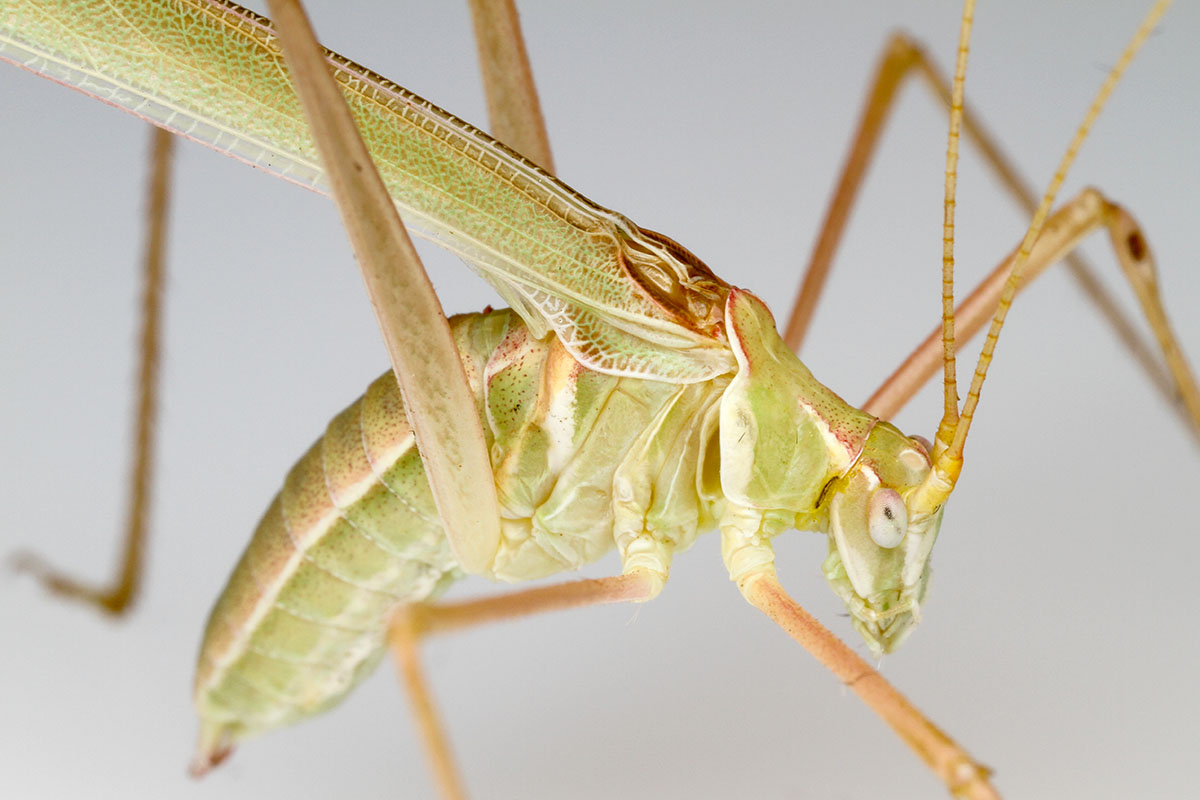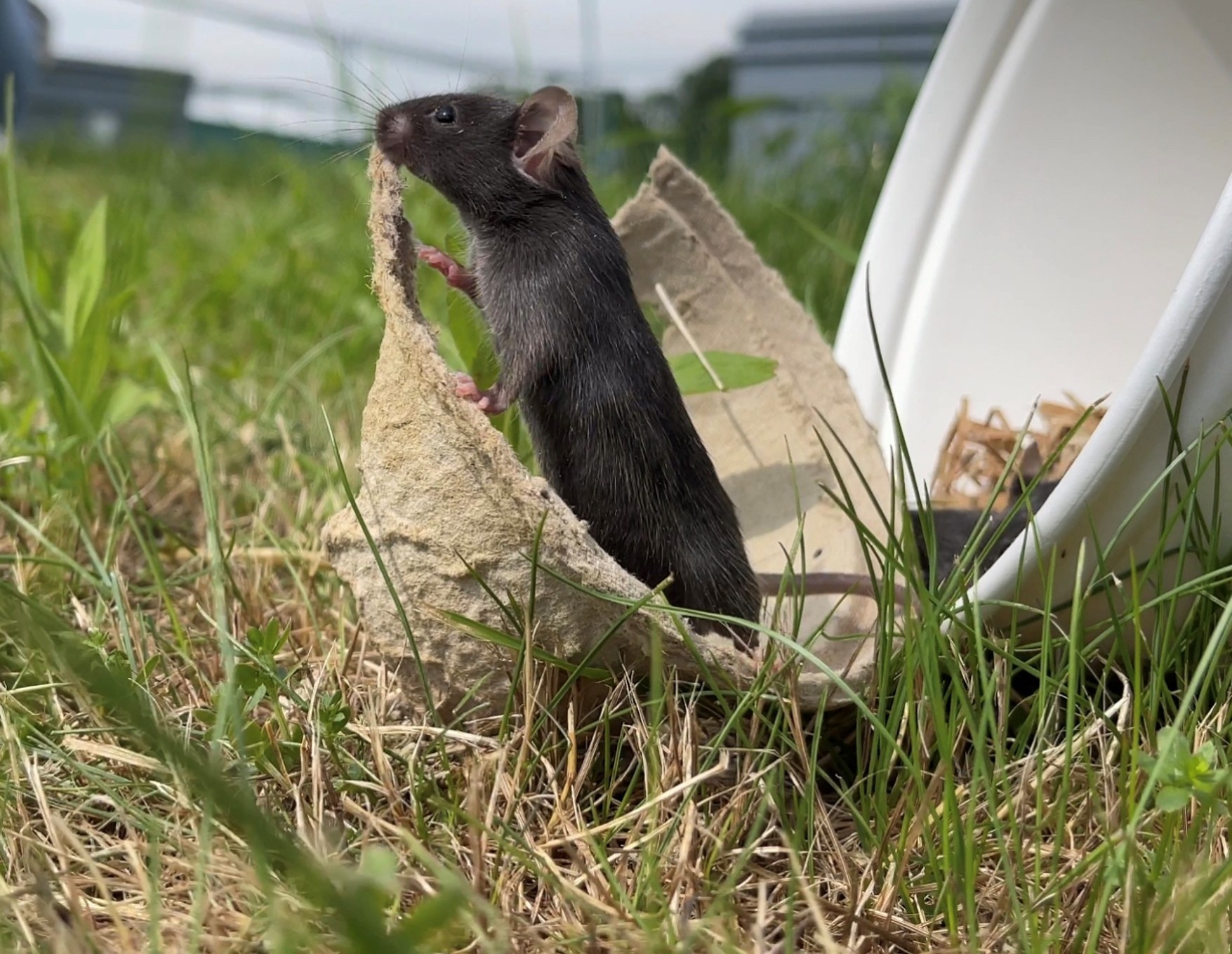The fossil katydid was entombed on a slab of stone the size of a BLT, its reedy legs bent and wings outstretched. The fossil resembled a modern Arethaea katydid, a genus known for extremely spindly legs, antennae, and wings. Strangely, the ancient katydid's soft insides seemed to be even better preserved than its hard exoskeleton: the dark smear of its gut, coiled like in modern katydids, traces of muscle fibers, and an unmistakably round organ nestled at the end of the abdomen. It looked like a tiny testicle.
"I was quite surprised when I found it," said Sam Heads, the director of the Prairie Research Institute's center for paleontology at the University of Illinois at Urbana-Champaign. When Heads first examined the fossil in the fall of 2022, picking out fossilized grasshoppers, crickets and other insect specimens from a donated collection, he instantly recognized it as a testicle, accompanied by tube-shaped accessory glands. "But it can't possibly be, right?" Heads remembers asking himself.
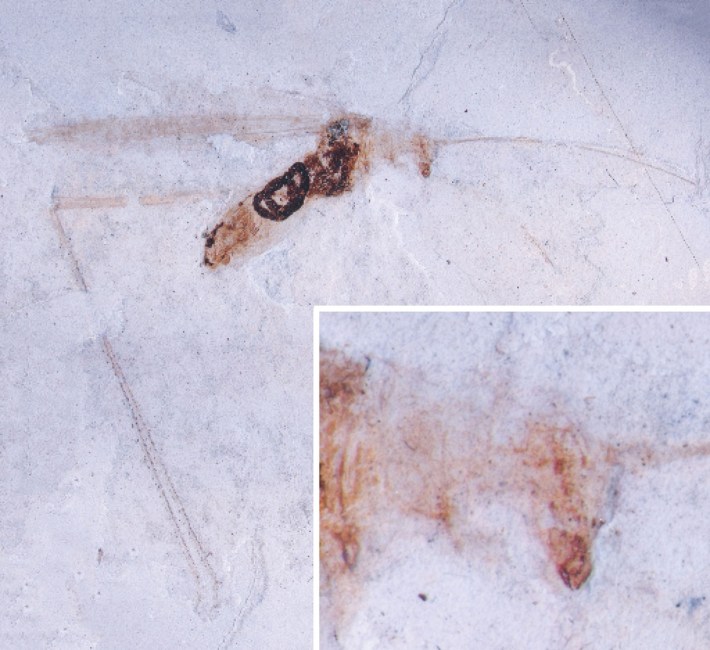
Soft tissues like this are not commonly preserved in compression fossils, where organisms are buried in layers of sediment. So Heads dissected some modern katydids in the genus Arethaea to examine their testes. He saw the exact same structures: coiled guts, accessory glands, and ball-shaped testes. He shared the katydid dissections with Leellen Solter, an insect pathologist who recently retired from the center, and who has seen the insides of a lot of insects. Solter confirmed the ancient ball was a testicle. "Sure enough, that's what they are. That's all they can be," Heads concluded.
Heads and colleagues describe the fossil katydid, a new extinct species they've named Arethaea solterae, after Solter, in a paper in the journal Palaeoentomology. It hopped around and hid from predators in the grasses of what is now northwestern Colorado and was found in a rock formation that has preserved countless insects, fish, and plants from the Eocene.
Although the fossil records just one ball, the ancient katydid would have had two like its modern counterparts, Heads said. "Because it's preserved on its side and squished, you're only seeing one side of the anatomy," he explained.
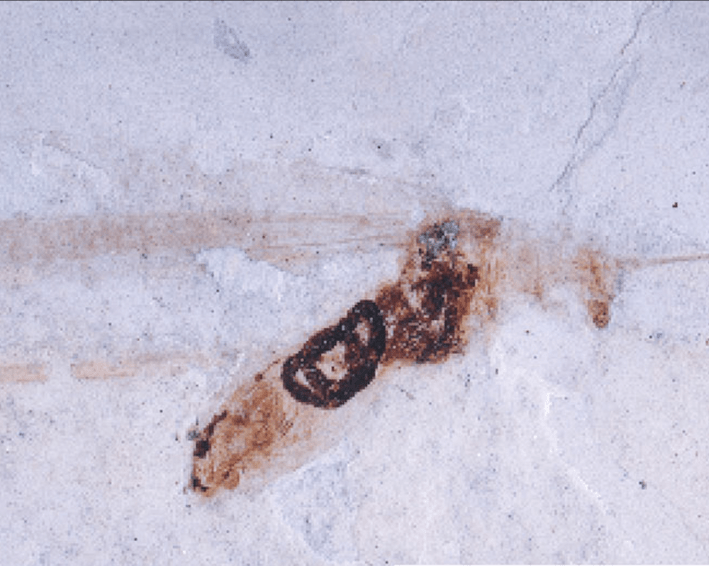
Before the katydid, Heads had never seen a preserved testicle in any of the fossil insects he'd examined. The closest he'd come was discovering a fossilized phallic complex from a male assassin bug, from the same rock formation, which Heads and colleagues described in a paper in 2021. "We were quite impressed with the preservation of the sclerotized hard parts of the phallus," Heads said, referring to the hardened parts of insects. But the katydid fossil takes it a step further, preserving the squishier parts of a bug's genitalia, "which is just crazy," he added.
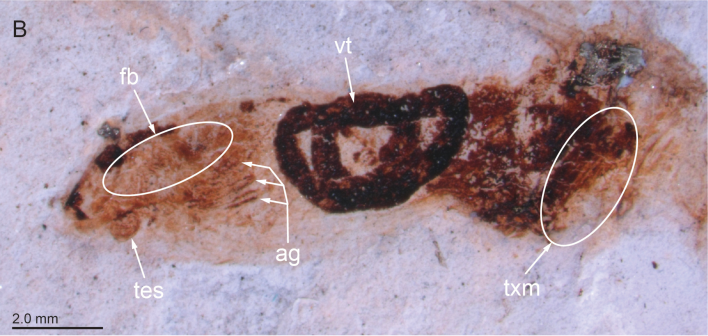
Some katydids are infamous for their balls. In 2010, scientists declared one species of katydid, the tuberous bush cricket Platycleis affinis, to have record-setting testicles—the biggest testes proportional to body mass in the entire animal kingdom. The bush cricket's testes account for 14 percent of the insect's body weight, and take up most of the insect's abdomen. These balls blew right past the previous record-holder, a fruit fly whose testes took up 10.6 percent of its total size. If a 200-pound human had testicles proportionate to the tuberous bush cricket, the balls would weigh a whopping 28 pounds.
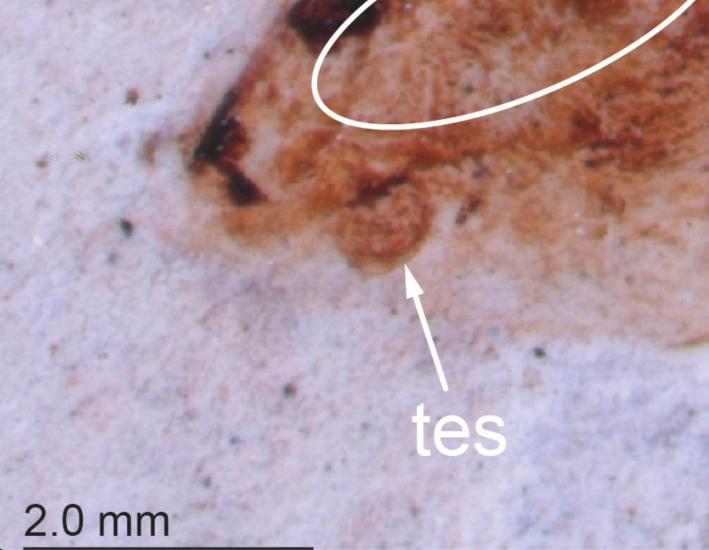
The precise mass of the fossil katydid's preserved testicle is likely lost to time. But Heads said he's noticed many fossilized insects from this formation in Colorado have exceptionally preserved soft tissues but more poorly preserved harder external parts, which is quite unusual considering what parts of an animal decay first. "It's astonishing," he said. "A lot of them have really well preserved internal anatomy, muscles, gut traces, all that sort of stuff," he said. "But the outside kind of looks like they've been hit with a rolled up newspaper." So there may be more 50-million-year-old testicles out there, waiting for the right person to scoop them up.
